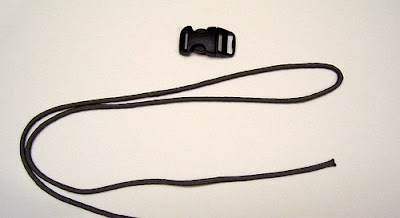Last step in Woven Paracord Bracelet/Watchband
Step 7: Finishing up To finish up, you'll take the working strand around one of the outer cord, so it's coming thru the under side of the bracelet/watchband. *Check for a good fit on your wrist at this point. If it's too loose or too tight, untie, adjust your starting measurement longer or shorter to correct, and try again. Take your hemostats and work them thru about three of the center weaves, towards the buckle end. Grasp the working strand and pull it back thru the center weaves. Trim the end with your scissors, quick melt the end to prevent the cord from fraying, and tuck it under the weave. Now do the same with the shorter end of cord and you're done. If you measure again, you'll see that the finished length is about 1 inch longer than the starting measurement. This will vary depending on your tightening of the weave as you go, but should make for a loose/comfortable fit. Enjoy! *Anyone that's worn a nylon/...

